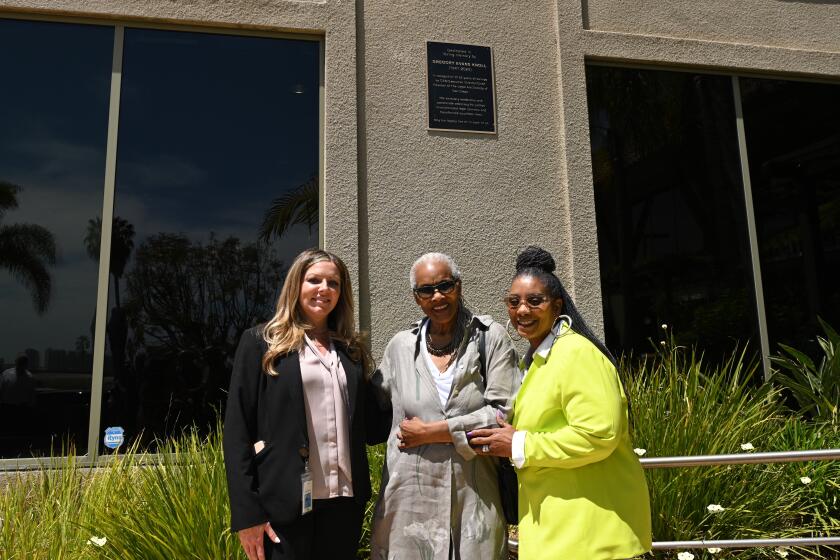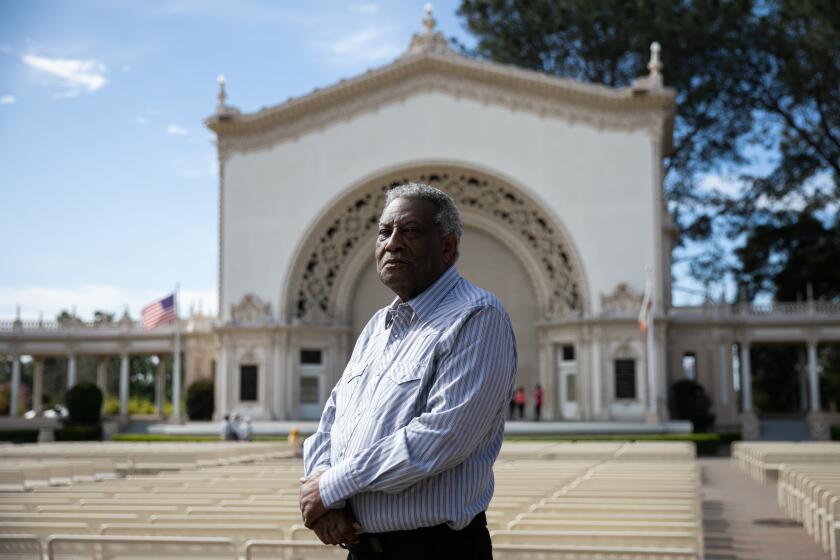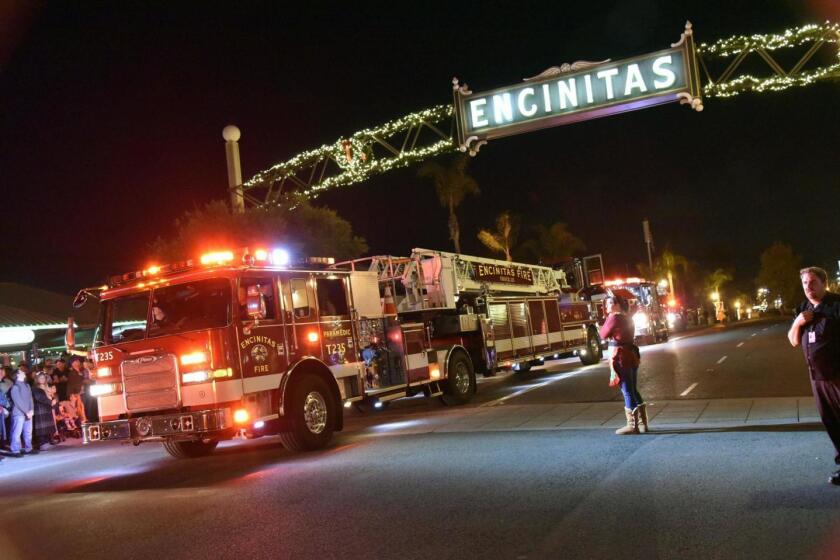Flying Leatherneck Aviation Museum, and its dozens of restored aircraft, moving from S.D. to Irvine

)
Marine Corps Air Station Miramar was home to military history for more than two decades
For years, drivers heading down Miramar Road along the northern edge of Marine Corps Air Station Miramar got a free military history lesson: an outdoor display of several dozen Marine Corps aircraft dating back to World War II.
But that display, which is part of the Flying Leatherneck Aviation Museum, is slowly disappearing.
The museum is slated to be moved to the Orange County Great Park in Irvine. The 1,300-acre park, owned by the City of Irvine, sits on land that was once part of Marine Corps Air Station El Toro, which was commissioned in 1943 during World War II.
In fact, the museum is heading back to where it originally was from 1989 until 1999, when the base was decommissioned and the museum was moved south to Marine Corps Air Station Miramar.
The museum’s 40 or so aircraft and vehicles, which have been painstakingly restored by dozens of volunteers, mostly area veterans, are scheduled to be moved over the next year or so to a WWII-era hangar that was part of El Toro, known as Hangar 296.
Aircraft are being prepared for transport by truck. Larger aircraft are being dismantled for storage and eventual transport. Some are famous, such as the CH-46 helicopter, which evacuated the ambassador and flag from the roof of the American embassy during the fall of Saigon in 1975.
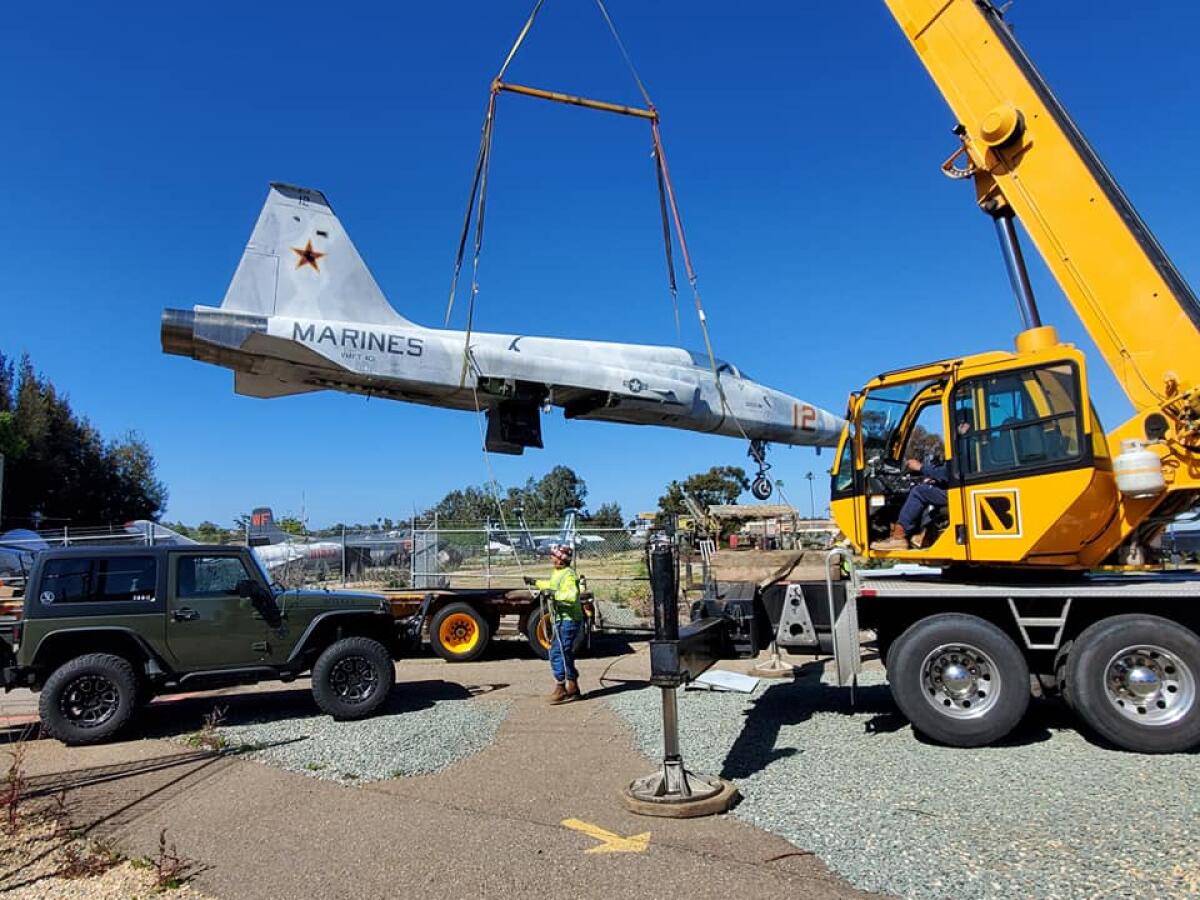
The aircraft all have stories, covering various eras in military history beyond WWII, including the Korean War, Vietnam and the Gulf War. Volunteers have been sharing those stories with visitors at the museum, sometimes interweaving their own experiences as veterans.
Passing on Marine Corps aviation history is the main mission of the museum and the Flying Leatherneck Historical Foundation, which has been helping support it for several decades and which is leading the relocation efforts.
“In addition to providing financial support for the museum, the Flying Leatherneck Historical Foundation has provided materials and supplies to restore aircraft and coordinated as many as 70 volunteers along with overseeing the day-to-day operations of the museum,” said retired Marine Corps Brig. Gen. Michael Aguilar, president of the Flying Leatherneck Aviation Museum and executive director of the Flying Leatherneck Foundation.
Aguilar, a former AH-1 Cobra squadron commander, flew the AH-Cobra, which is among the aircraft in the museum’s exhibit.
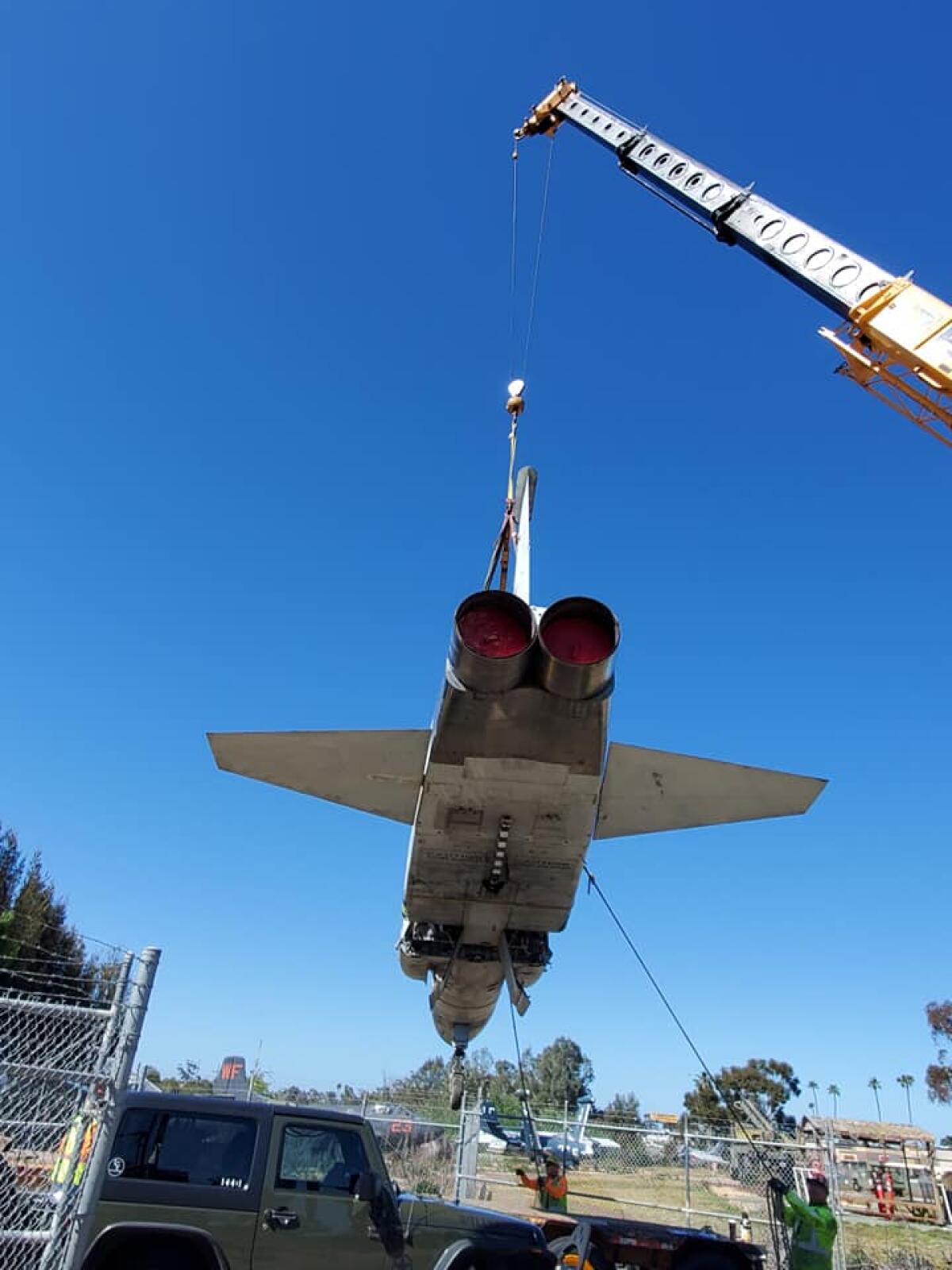
The foundation was approached by the City of Irvine last spring with an offer to help relocate the museum’s aircraft and artifacts to Great Park as discussions were going on about closing the museum on base. The museum has been temporarily closed since April 1 of last year pending relocation.
“Facing increasingly smaller budgets year after year, the command at MCAS Miramar chose to close the museum and apply those monies to critical projects across the station,” said Capt. Matthew Gregory, a base spokesman and director of communication at Marine Corps Air Station Miramar.
Even with a corps of dozens of dedicated volunteers, the museum cost the base roughly $600,000 per year to maintain and operate, according to Gregory. About $400,000 went to five full time employees and the remaining $200,000 covered operations costs, utilities and maintenance of the facilities. Funding for maintaining the aircraft came from the Flying Leatherneck Aviation Museum Foundation.
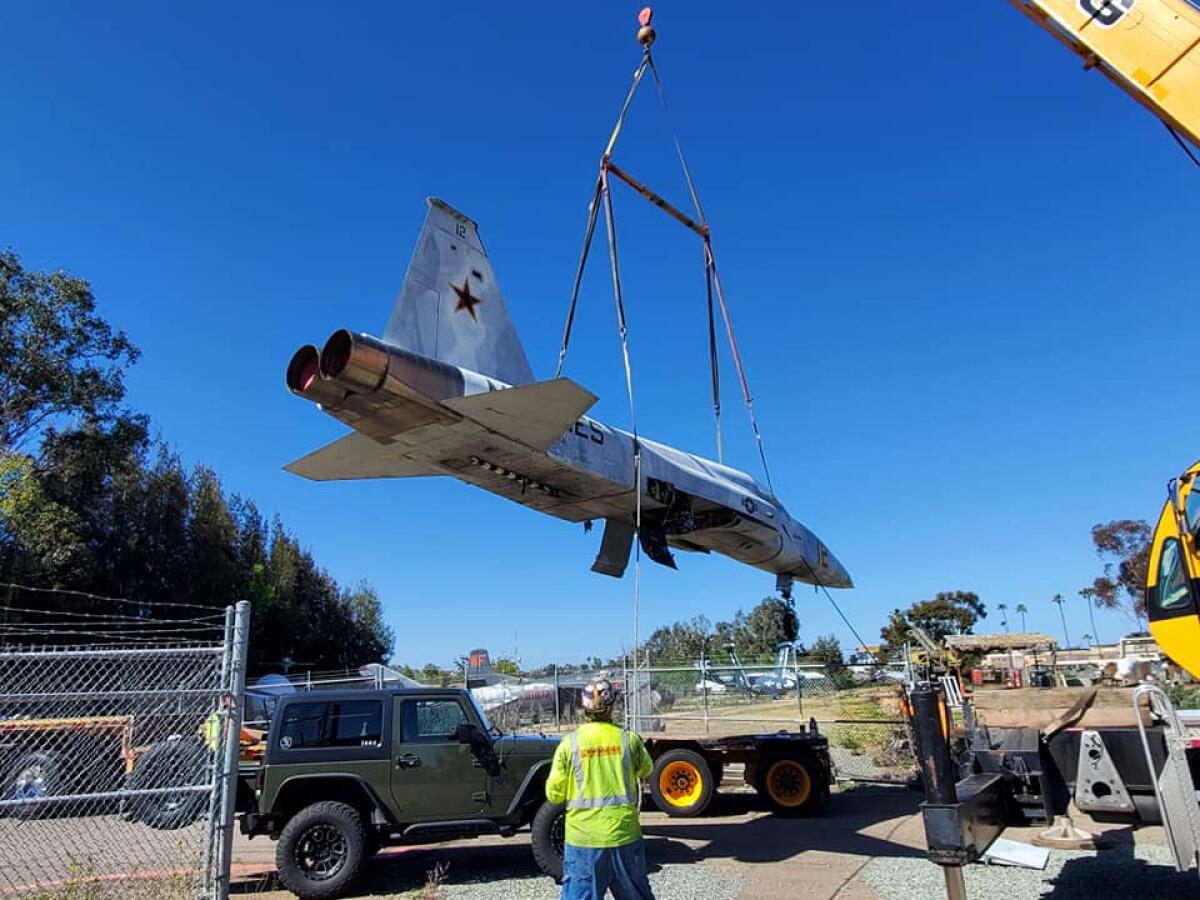
The Marine base and foundation worked together for years, but because the Department of Defense could not accept monetary donations to help pay for running the museum and the foundation could not generate enough money to pay for running the museum by itself, the decision was made to close it.
“There was a groundswell of support to keep the museum here, but we couldn’t reach an agreement with the Marine Corps to keep the museum open on base, so with support from the Marine Corps, we are relocating it,” Aguilar said.
The museum collection housed at MCAS Miramar is owned by two separate Department of Defense entities, the National Museum of the Marine Corps based in Quantico, Va. and the Naval Aviation Museum in Pensacola, Fl.
Smaller artifacts will be sent to the National Museum of the Marine Corps to be cataloged and stored; archival material, such as historical photographs, will be sent to the Marine Corps History Division to be curated and maintained.
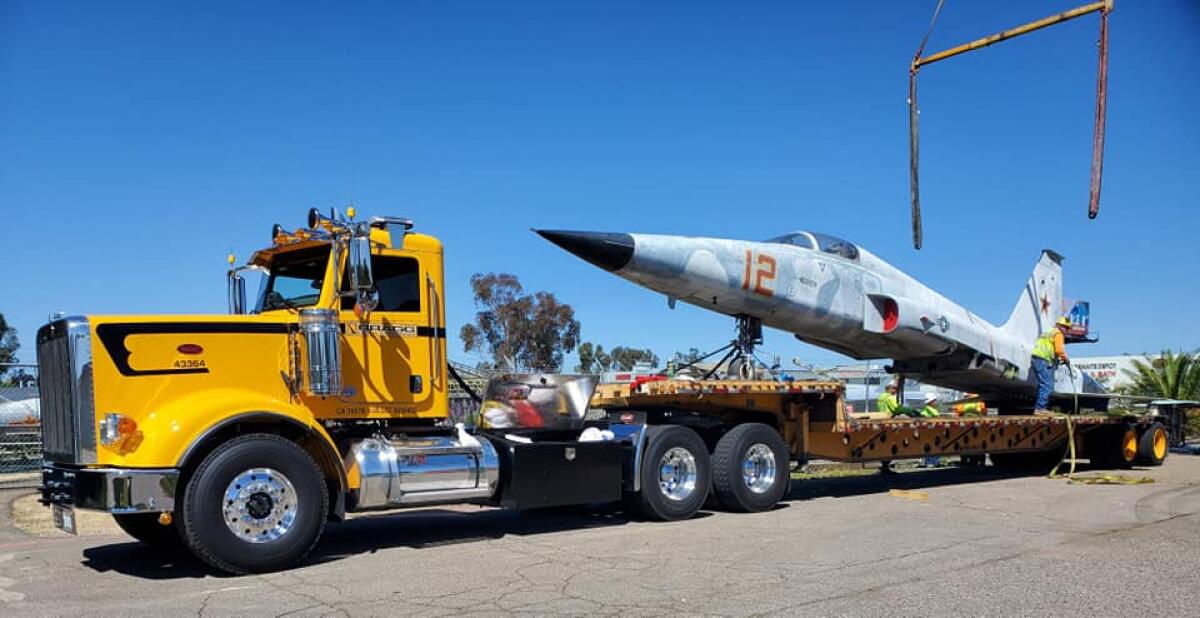
A handful of aircraft that were housed at Miramar and owned by the Naval Aviation Museum in Pensacola are being moved to other museums. The AV-8C Harrier, for example, is moving to the Ft. Worth Aviation Museum in Fort Worth, Texas, and the F-5 is moving to the Pima Air & Space Museum in Tucson, Ariz.
The Marine Corps plans to store and care for its aircraft in preparation for the move to the hangar in Irvine.
“This is a one-of-a-kind collection showcasing some of the contributions of the Marine Corps going back to WWII, and it is fitting that it be located in Southern California, where the military has had a large presence since WWII,” Aguilar said.
The City of Irvine and Flying Leatherneck Historical Foundation have been working out what their roles will be in renovating the museum facility, setting up the exhibits and funding the project. A private/public agreement in the form of a Memorandum of Understanding is being finalized between the city, the Foundation and the National Museum of the Marine Corps, which falls under the service’s Training and Education Command, based in Quantico, VA.
The agreement will outline the terms of the loan of the museum collection of aircraft and selected artifacts along with a business plan and preliminary budget for opening the museum, which is being established as a nonprofit.
“As a nonprofit private museum it will not be subject to the constraints in fundraising from the community that it faced when it was part of a military base,” Aguilar said.
The City of Irvine has entered into a $6.8 million contract with an architectural and engineering firm for the design and planning of the roughly 120 acres of the Cultural Terrace at Great Park, which includes the new museum facility, according to Aguilar. The cost of building the cultural terrace, including refurbishing the more than 200,000-square-foot hangar and relocating the museum, which will be part of the Cultural Terrace, is estimated at roughly $30 million.
The foundation’s initial cost estimate for setting up exhibits of aircraft and artifacts, including restoring aircraft that have weathered in the outdoor display at Miramar and building office space at the hangar is more than $5 million.
The foundation set a preliminary goal 10 months ago of raising $5 million over the next two years and it has raised $4.8 million in donations and pledges so far.
“Our foundation is continuing its mission at the new museum site to preserve the history of the Marine Corps, honor all those who serve in the Corps and inspire a renewed appreciation for the freedoms we enjoy,” Aguilar said.
The tentative target date for opening the museum in Irvine is late next year.
Visit flyingleathernecks.org
Get North County news in your inbox
Top stories from the San Diego North County every Monday, Wednesday, and Friday.
You may occasionally receive promotional content from the San Diego Union-Tribune.





